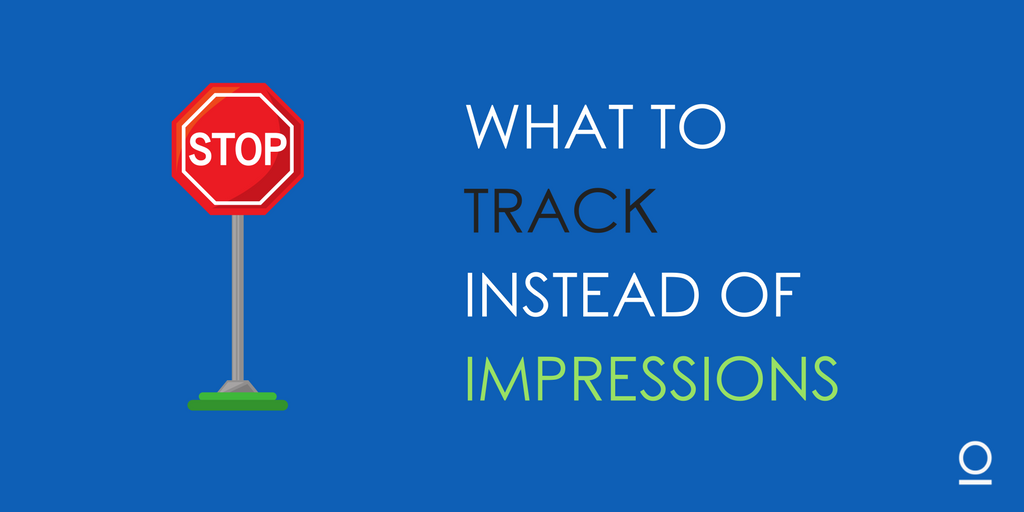In this article, we explore how marketers must look towards actionable metrics, rather than vanity-based impressions, to measure the success of their campaigns
Look Below the Surface of Metrics
It all began when marketers started exploring an exciting new advertising channel: digital. Think back to traditional banner ads, followed by search, and much much later on, social media. Marketers who were early digital adopters often saw immediate success, and in turn, wanted to show off to their management (generally for the praise and increased budget).
However, a major obstacle was uncovered when attempting to quantify digital success to executives, as they were typically older and unfamiliar with this form of advertising (let alone the internet) at the time. Because of this, marketers reverted to a language that their managers could understand – this Jurassic language was impressions.
In traditional advertising models, impressions were estimated by extrapolating from a sample (e.g. look at Nielsen for TV ratings). In the digital world, it’s always been simple to count how many times a page was loaded, or a video was watched. It would seem logical, then, to rely on impressions for measurement of digital campaigns because it was a commonly accepted metric in the past and would appear to be an apples to apples comparison.

Here at Qoints, we’ve gathered data from thousands of digital activation campaigns. We can now say with confidence that the number of impressions, on its own, is nothing more than a vanity metric. Many marketers find it reasonable to use impressions as an indicator of ROI… today we’re going to poke a hole in that notion.
“Always question the underlying meaning of reported results before relying on them as Key Performance Indicators.”
Impressions Provide Misleading Evidence
Impression numbers tend to expand quickly, which naturally makes a marketer feel as though their message is landing. For this reason, it’s imperative to keep a clear mind and always question the underlying meaning of reported results before relying on them as Key Performance Indicators.
To give an example, 10,000 unique impressions on a Facebook sidebar ad may seem like a lot, but without any additional context, it really doesn’t mean anything for impact. Knowing the average clickthrough rate for a Facebook sidebar ad, and comparing it to your own performance, is essential to understanding whether or not your ads are performing well. The idea that a Facebook sidebar impression could be compared to a Facebook Sponsored Post impression alongside TV or Radio impressions is silly.
According to our research analyzing award winning shopper marketing campaigns in 2016, there is little (if any) correlation between impressions on their own and sales lift.
Take a look at the examples below:
Campaign A had approximately 6,000,000 impressions, and produced a sales lift of 30%
Campaign D had approximately 205,000,000 impressions, but only generated a sales lift of 13%

Marketers cannot rely on impressions alone to determine the success of their campaigns, as this measure of engagement is barely at the surface level.
Engagements such as likes, retweets, shares and comments are more ideal because they require some amount of action from the consumer; even if it’s as simple as a click, it proves (in most cases) that the ad was seen. Anything requesting customer engagement will be more impactful, given that approximately 90% of shared content is forgotten if there is no call to action.
The Leading Alternative – What to Track Instead of Impressions
It is essential to actively seek out actionable metrics, which measure consumer activity that promotes growth. These include engagements that are interactive, like coupon redemption or a product referral. Tying an engagement to an actual sale is of course the gold standard, so always ask yourself what would be needed in order to make such an attribution. If it’s feasible, it would be silly not to track – however in many cases digital measurement is very difficult (we look forward to a future where everyone can tie their digital marketing efforts directly to sales!).
In any case, ensuring that your efforts are coupled with effective measurement is the only way to be confident in the objective evaluation of a campaign’s success or failure. Even if you do deem a campaign to be a failure, proper measurement provides a foundation for consistent improvement as long as the methodology is consistent (and you stick to it).
Although vanity metrics are appealing at first glance, marketers should look towards actionable metrics that display a more invested (listening and responding) audience to measure campaign impact.

Go Beyond Impressions
In order to determine the overall success of a campaign, marketers must be able to identify when and where their energy and budget was effectively allocated. Without going beyond the metrics of impressions, only the superficial interactions can be identified, resulting in a deceitful representation of the campaign’s impact.
Measuring elements aside from vanity metrics will allow brands to track the underlying results of their campaigns, and adjust accordingly to stay one step ahead of the competition.
Always look towards your campaign data to provide valuable interpretations – we have curated a research report of how effective analysis of digital promotion can in fact lead to a sales lift. Find out how your digital benchmarks can work for you – contact us to learn more!

